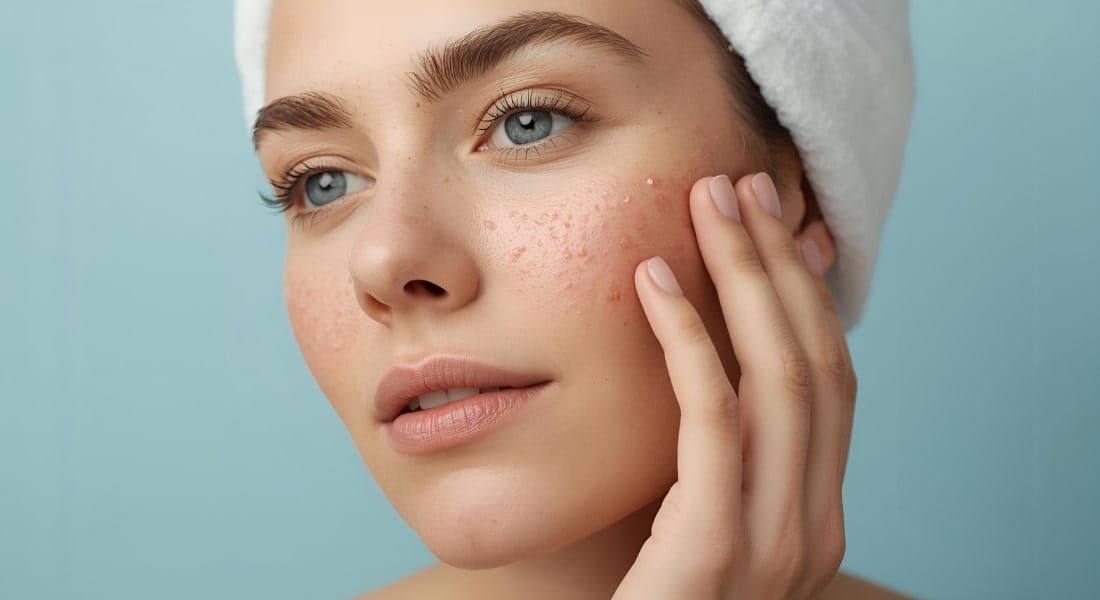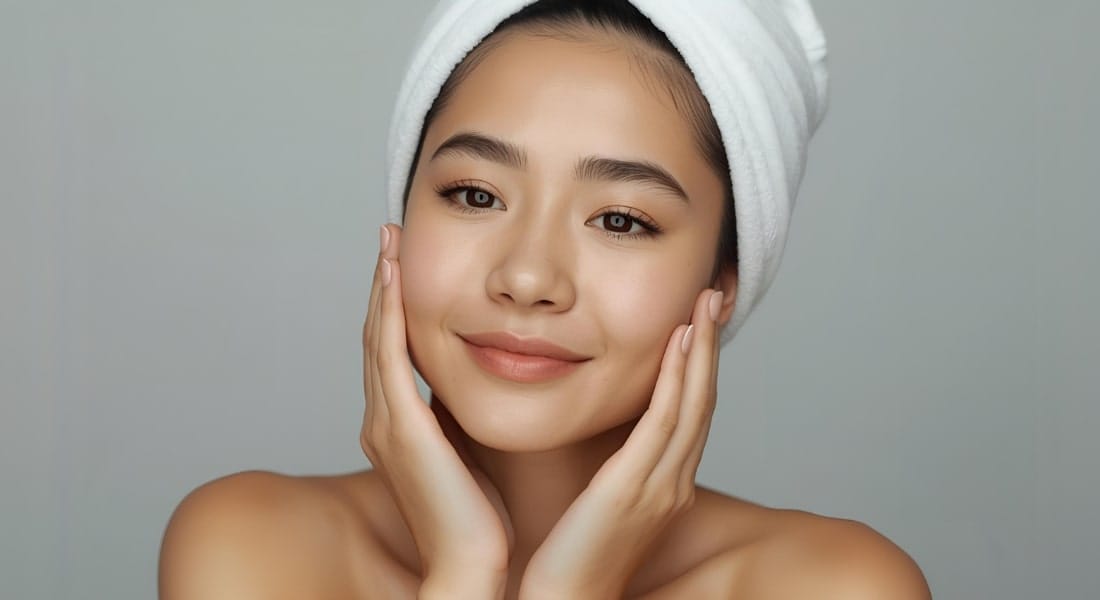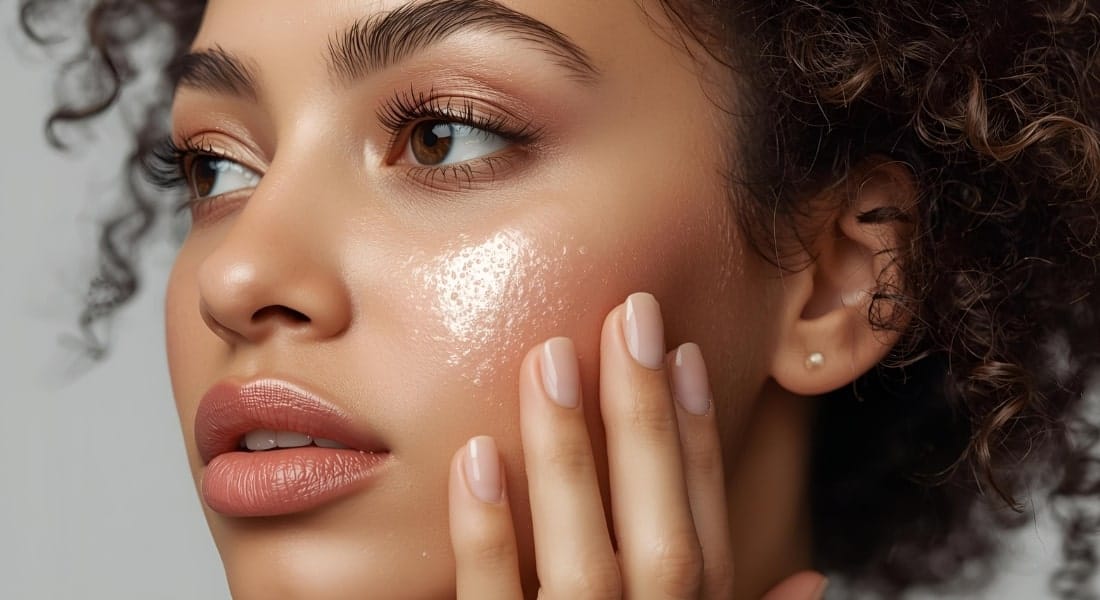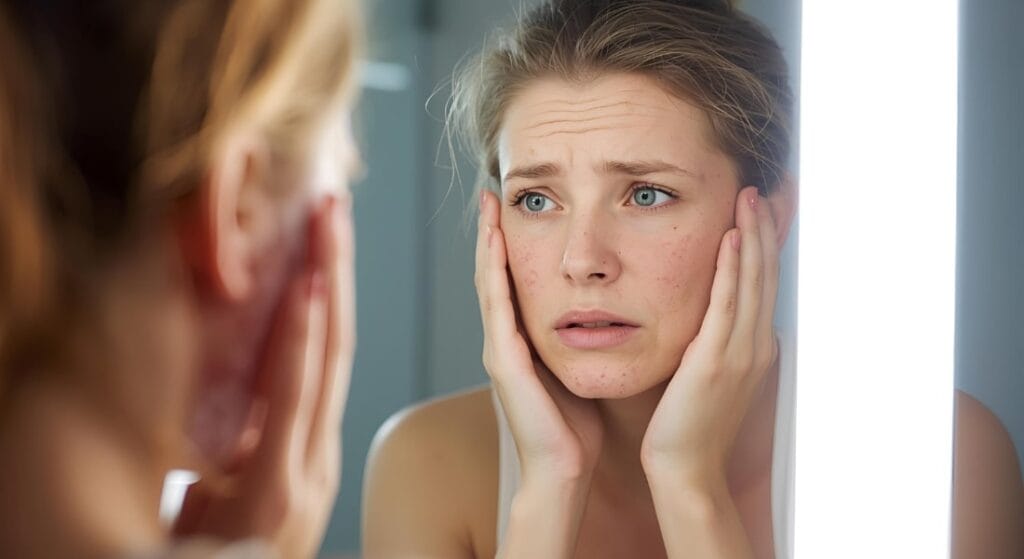Waking up to a new breakout can be a jarring and frustrating experience, especially when you thought acne was a problem left behind in your teenage years. For many adults, the sudden appearance of persistent pimples, painful cysts, and inflamed skin is more than just a cosmetic issue; it’s a source of emotional distress, impacting self-esteem and confidence. This form of adult acne is a common reality, affecting a significant number of people well into their 20s, 30s, and even 40s. Unlike the blackheads and whiteheads of adolescence, adult breakouts are often deeper, more inflammatory, and tend to cluster around specific areas of the face.
The truth is, adult acne is fundamentally different from its teenage counterpart. It’s a complex condition with a unique set of triggers and requires a targeted approach for effective management. If you’re struggling with this persistent skin issue, it’s crucial to understand its root causes and the solutions available. This comprehensive guide, brought to you by Aakaar Medical Technologies Ltd, delves into the science behind adult acne causes, debunks common myths, and outlines effective adult acne treatments, from advanced at-home skincare to professional in-clinic therapies. We believe that with the right knowledge and a strategic plan, clear and healthy skin is an achievable goal.
Understanding Adult Acne: More Than Just a Teenage Problem
When most people think of acne, they picture a teenager with a T-zone full of pimples. However, the term “adult acne” refers to any form of late-onset acne that appears after the age of 25. This condition can manifest in two primary ways: either as a continuation of adolescent acne (persistent acne) or as a new development in adulthood (late-onset acne). While both forms involve the same basic mechanism—clogged pores, excess oil production, and the presence of C. acnes bacteria—the patterns and underlying adult acne triggers are distinct.
How is Adult Acne Different from Adolescent Acne?
- Location: While teenage acne typically affects the forehead, nose, and chin (the T-zone), adult acne often appears on the lower half of the face. The jawline, chin, and around the mouth are the most common areas for hormonal acne in adults. These breakouts in adults are often deep, cystic, and painful.
- Lesion Type: Adolescent acne is frequently a mix of comedones (blackheads and whiteheads) and inflammatory pustules. Adult acne, particularly hormonal acne, tends to be more inflammatory, consisting of red, tender papules and deep, nodular cysts that can lead to significant acne scars.
- Contributing Factors: Hormonal fluctuations are a significant cause of adult acne, but lifestyle factors, stress, and environmental triggers play a much larger role than they do in teenage acne.
Common Myths vs. Facts
- Myth: Adult acne is caused by poor hygiene.
- Fact: While proper cleansing is important, acne is not caused by “dirty skin.” Over-scrubbing can strip the skin’s natural barrier and worsen inflammation.
- Myth: You can simply “outgrow” acne.
- Fact: Many people do, but acne is a chronic inflammatory condition that can persist or begin in adulthood due to a combination of genetic, hormonal, and environmental factors.
- Myth: Adult acne is purely genetic.
- Fact: Genetics can make you more susceptible, but it’s often the interplay between your genes and lifestyle/environmental factors that triggers a breakout.
Understanding these differences is the first step toward finding an effective adult acne treatment. It’s about moving beyond generic solutions and adopting a targeted, comprehensive strategy.
The Causes of Adult Acne: Unpacking the Triggers
To truly address adult acne, you must first identify its root cause. Unlike the simple hormonal surge of puberty, the causes of adult acne are often multifaceted and interlinked.

1. Hormonal Imbalances
This is arguably the most significant adult acne trigger, especially for women. Androgens (male hormones like testosterone) can stimulate the sebaceous glands to produce excess sebum (oil). Fluctuations in hormones can be caused by:
- Menstrual Cycles: Many women experience a premenstrual flare-up of hormonal acne due to a drop in estrogen and a rise in progesterone and testosterone.
- Pregnancy and Menopause: Both stages involve significant hormonal shifts that can lead to acne.
- Polycystic Ovary Syndrome (PCOS): This endocrine disorder is a common cause of adult acne in women, as it involves high levels of androgens.
- Stress Hormones: When you’re stressed, your body releases cortisol. This stress hormone can increase oil production, contributing to adult acne breakouts.
2. Lifestyle Factors
Your daily habits have a direct impact on your skin’s health.
- Diet: While the link is not universally accepted, a growing body of evidence suggests that high-glycemic index foods (sugary snacks, white bread) and dairy products can exacerbate acne by increasing inflammation and insulin levels, which in turn can affect hormones.
- Lack of Sleep: Insufficient sleep elevates cortisol levels and disrupts the body’s ability to repair and rejuvenate, making the skin more vulnerable to inflammation and breakouts.
- High Stress: Chronic stress creates a vicious cycle. Cortisol increases oil production, and the resulting breakouts create more stress, further worsening the condition.
3. Environmental Triggers
Your external environment and the products you use can also be a cause of adult acne.
- Cosmetics and Skincare Products: Using products that are not non-comedogenic can clog your pores. Heavy foundations, thick moisturizers, and certain hair products can be significant adult acne triggers.
- Pollution: Environmental pollutants can damage the skin’s barrier, increase oxidative stress, and trigger inflammation, leading to adult acne.
- Friction: Constant rubbing from objects like cell phones, hats, or face masks ( maskne) can create irritation and inflammation, leading to breakouts.
4. Genetics and Family History
If your parents or siblings have struggled with acne in adulthood, you may be genetically predisposed to it. Your genes can influence everything from the size of your pores to how your body responds to hormones and inflammation.
By understanding these multifaceted causes of adult acne, you can begin to build a targeted and effective adult acne prevention strategy.
Effective At-Home Solutions: Building a Strategic Skincare Routine
Your daily skincare routine is the first and most critical line of defense against adult acne. While it can’t cure hormonal imbalances, a well-formulated routine can control breakouts, reduce inflammation, and improve overall skin health.

1. A Gentle and Consistent Routine
The foundation of any skincare for adult acne is simplicity and consistency.
- Cleansing: Use a gentle, sulfate-free cleanser twice a day to remove dirt, oil, and makeup without stripping the skin. Over-cleansing can disrupt the skin barrier and worsen inflammation.
- Moisturizing: Even oily skin needs moisture. Look for a non-comedogenic and oil-free moisturizer to keep the skin hydrated and support its barrier function.
- Sun Protection: Daily sunscreen is non-negotiable. Sun exposure can darken post-inflammatory hyperpigmentation, making acne scars more noticeable. Choose a lightweight, broad-spectrum sunscreen with at least SPF 30.
2. The Power of Targeted Topical Ingredients
Incorporating specific active ingredients can make a significant difference in how to get rid of adult acne.
- Retinoids: Derivatives of Vitamin A, retinoids (like retinol and tretinoin) are a gold standard for adult acne treatment. They work by increasing cell turnover, preventing dead skin cells from clogging pores, and reducing inflammation. They also help fade acne scars over time.
- Salicylic Acid: This Beta Hydroxy Acid (BHA) is oil-soluble, allowing it to penetrate deep into pores to dissolve sebum and dead skin cells. It’s excellent for preventing blackheads and whiteheads.
- Benzoyl Peroxide: A potent ingredient for killing acne-causing bacteria. It’s effective for treating inflammatory papules and pustules.
- Niacinamide: Also known as Vitamin B3, niacinamide is an anti-inflammatory powerhouse. It helps calm redness, reduce pore size, and improve the skin’s barrier function.
Among the innovative solutions available, Aakaar Medical Technologies Ltd offers etrelume Acnecidol Exo, designed to help manage acne and improve skin barrier health. This product harnesses a scientifically advanced approach to address the underlying issues of acne-prone skin, providing a modern adult acne remedy that can be seamlessly integrated into your daily routine. With its blend of effective ingredients, etrelume Acnecidol Exo works to normalize the skin’s microenvironment and reduce breakouts.
In-Clinic & Prescription Treatments: When to Seek Professional Help
While a diligent at-home routine is crucial, sometimes adult acne requires the expertise of a professional. If you have persistent, cystic, or scarring acne breakouts, it’s time to consult a dermatologist.
1. Dermatologist-Prescribed Treatments
A dermatologist can assess your specific condition and recommend stronger, prescription-strength options.
- Topical Medications: Prescription retinoids (like Tretinoin and Adapalene) and topical antibiotics can be more effective than over-the-counter options.
- Oral Medications: For severe cases, oral medications may be prescribed. These can include oral antibiotics to reduce bacteria and inflammation, hormonal therapies (like Spironolactone) to control androgen levels, or Isotretinoin (Accutane) for recalcitrant, severe acne.
2. In-Clinic Procedures
Dermatologists and aesthetic practitioners offer a range of procedures that can accelerate adult acne treatment and address stubborn acne scars.
- Chemical Peels: These peels use acids to exfoliate the top layers of the skin, unclogging pores and improving skin texture.
- Light and Laser Therapy: Treatments like Blue Light Therapy target and destroy acne-causing bacteria, while other laser therapies can reduce inflammation and improve the appearance of acne scars.
- Microneedling: This procedure creates micro-injuries to the skin, stimulating collagen production to improve the appearance of acne scars and texture.
For dermatologists and aesthetic practitioners, pairing home-use products like etrelume Acnecidol Exo with in-clinic treatments offers a holistic approach. This combined strategy ensures that patients not only receive powerful professional care but also maintain and prolong the results at home, leading to faster and more sustainable adult acne solutions.
Lifestyle & Preventive Measures: A Holistic Approach
Effective adult acne treatment goes beyond just topical creams and procedures. A holistic approach that addresses internal factors is key to how to prevent adult acne and maintain clear skin in the long term.
- Dietary Adjustments: Focus on an anti-inflammatory diet. Incorporate foods rich in antioxidants, omega-3 fatty acids (found in fatty fish, flaxseeds), and zinc. Drink plenty of water to stay hydrated and support skin function.
- Stress Management: Find healthy ways to manage stress, such as exercise, meditation, yoga, or spending time in nature. Reducing stress levels can significantly lower cortisol and prevent stress-induced breakouts.
- Prioritize Sleep: Aim for 7-9 hours of quality sleep per night. Sleep is when your body repairs itself, and good sleep hygiene is crucial for hormone regulation and skin health.
Conclusion: Taking Control of Your Skin

Adult acne can feel like an unending battle, but it is not a fight you have to face alone. By understanding the unique causes of adult acne and adopting a comprehensive strategy, you can take back control of your skin and your confidence. From building a gentle, targeted skincare routine with advanced solutions for adult acne, to consulting a professional for in-clinic treatments, the path to clear skin is a collaborative journey.
Remember, patience and consistency are key. While a multi-pronged approach combining topical treatments, lifestyle changes, and potentially professional intervention is the most effective strategy, it’s important to give each method time to work. Don’t be afraid to seek expert advice from a dermatologist who can guide you toward the right combination of therapies.
As you embark on your journey toward healthier skin, consider exploring advanced solutions like etrelume Acnecidol Exo from Aakaar Medical Technologies Ltd. This scientifically formulated product is designed to be a cornerstone of your daily routine, providing the support your skin needs to heal and thrive. With the right knowledge and tools, you can finally find relief from adult acne and rediscover the clear, radiant skin you deserve.

